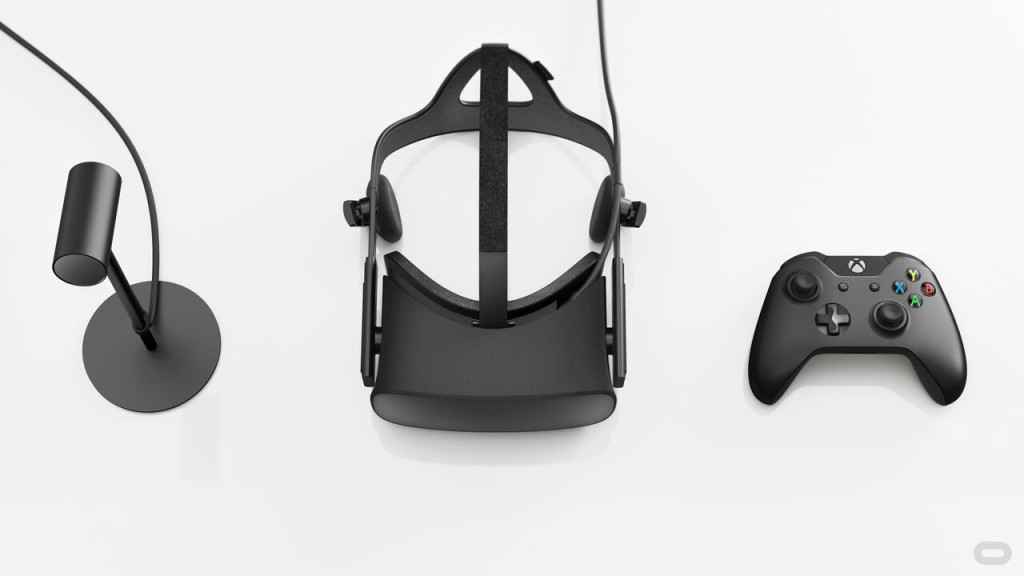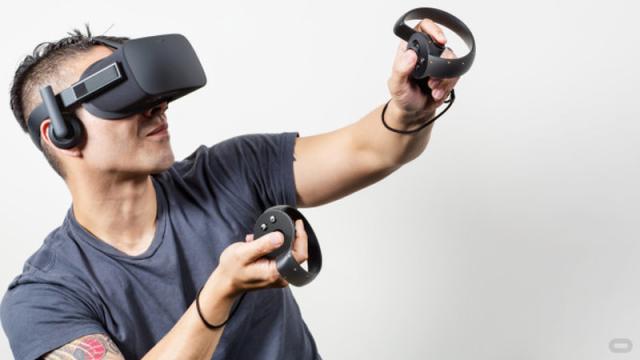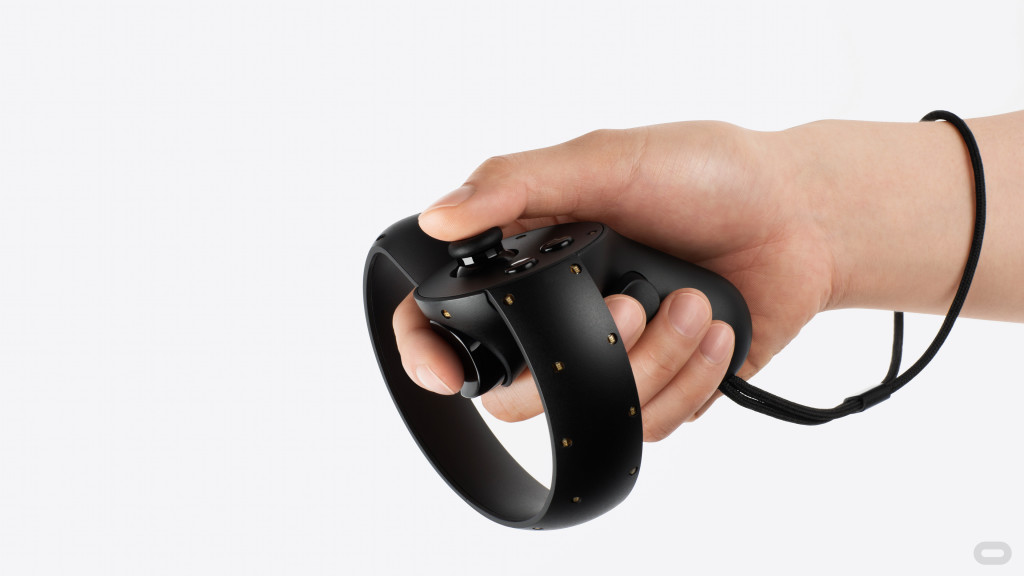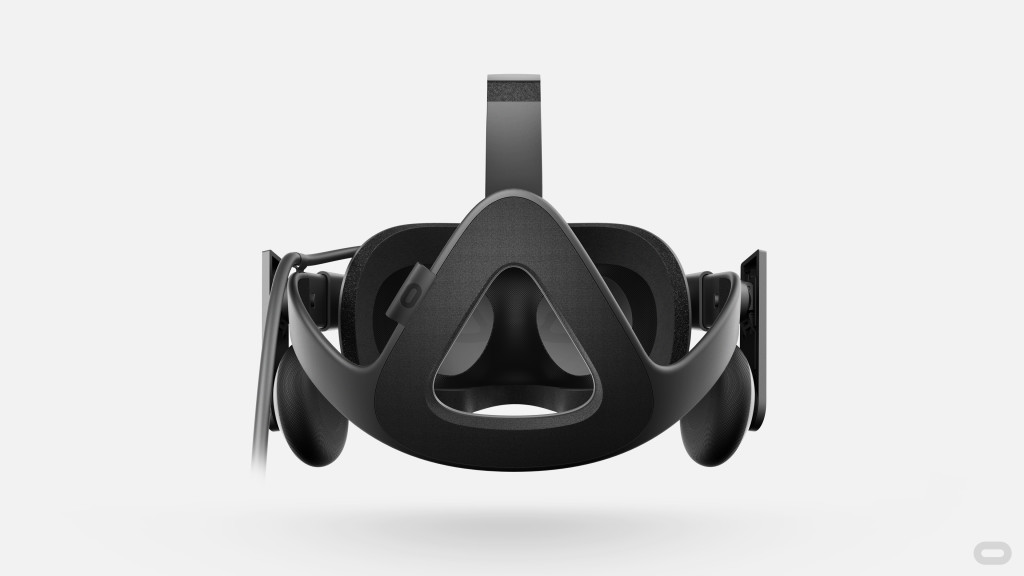At Gamescom a few weeks ago, I had an appointment to see Oculus to try out the soon-to-be-released retail version of the Rift, which I was interested to see but not exactly zinging with excitement about.
I’ve tried various VR technologies several times by now, as well as the Oculus itself, which I’ve been using once every few months or so since the first DK1 kits were shipped out. I’m VR-curious and pretty enthusiastic about the technology, but I’m not a full-on believer in its ability to transform our lives. Or at least, I wasn’t until I tried Oculus Touch, which is the new specific controller that will be released sometime early next year after the Rift itself is commercially available.
The Oculus Touch comprises two hand-held controllers that are less big and bulky than the HTC Vive things (those are bigger than a PlayStation Move). They’re… well, hand-sized, like a Wii nunchuck. On top there’s a little analogue control stick for your thumb and then there are two triggers under your fingers. One of them controls your index finger and the other controls your other three fingers, so you can do Night Fever pointing and, more importantly, gripping.
The current demo drops you straight into what is best described as a Matrix-style playroom full of objects to pick up, throw around, control, point, shoot and otherwise manipulate in virtual space. There with me in the room was an Oculus demonstrator, whom I could see as a wire-mesh head and set of hands. Because we were occupying the same space and could hear each other as if we were sitting opposite, I kept forgetting that in reality he was in another room. We could play ping-pong with each other, throw and catch things, chat and mess around in virtual space, as if he were actually there.
It was among the most impressive tech demos that I’ve ever seen, and there has been a lot of competition. As soon as I got out I called our news editor Julian and insisted he try it out. He was equally blown away. Here is why.
Julian Benson: The thing that left me so excited was how quickly I accepted the virtual version of the demonstrator was in the same space as me. As soon as I slipped on the headset and he started speaking to me, I responded to him as though he was in the same room. It was more than just speaking to each other, too, we were both using our hands to make the sorts of gestures you do in everyday conversation.
Keza MacDonald: It was slightly off-putting that he was just a wire-mesh representation of a head and some hands. I had a really weird experience when I first put the headset on; someone in the real world was walking towards me with the Touch controllers, and it looked like a disembodied pair of hands was just floating towards me in cyberspace. Then they became MY hands. But I can totally imagine in a year or few that the avatars in virtual space will look… well, just like us.
Julian: Or not at all like us. Think of the freedom we have with character creators now. We could make them look like us, or we could look like anyone we wanted.
Keza: Let’s talk a bit about the demo we played before we get carried away about the possibilities. What kinds of things did you get up to in the virtual playroom?
Julian: So, in the first playroom, where the demonstrator and I were stood opposite, the table in front of me was littered with toys. There were building blocks, ping pong balls, and soft toys. I think the first thing I did was to try and build a tower out of blocks. It felt really natural. Before the demonstrator had finished saying hello I’d started piling up blocks.
Keza: Yes, that’s the best thing about the Touch controllers: absolutely no explanation was necessary. It just feels like using your hands normally. The first thing I thought was “I’d love to show this to my mum”, who is 70 and is intrigued by games but finds the controllers off-putting.
Julian: After I’d built a tower the natural thing was to throw blocks at the demonstrator. He batted them away with his hand at first but then caught one and threw it back. I tried to catch it out of the air but that feat of hand eye coordination was beyond me. I’m not sure if that was down to the hand devices or my rubbishness at catching.
Keza: I caught blocks out of the air! I also managed an impressive 10-hit rally with the virtual ping pong ball and bat. Which, by the way, both behaved just like real ones. To the extent that when I dropped one, I bent down and picked it up off the floor without thinking about it. And that WORKED.
Julian: That’s awesome. I was terrible at the ping pong. I couldn’t return a single shot. I did manage to balance the ball on the paddle a bit, though.
Keza: Did your demonstrator ever turn the “underwater physics” switch?
Julian: He did. I was throwing a boomerang at the time and it just went on and on.
Keza: All my block towers started floating away and I was instinctively grabbing them out of the water.
Julian: It’s a neat effect because it’s not all to do with the change of the physics and lighting, but all the sound change pitch, too.
Keza: It did make ping pong easier! After a bit of underwater messing around, the scene suddenly changed to a toy shooting gallery. There were moving targets rotating behind a bench in front of me, which had a toy tank and a toy laser fun and a slingshot on it. I was delighted to discover that video games have given me at least some semblance of shooting accuracy in 3D. But I couldn’t use the slingshot for shit.
Julian: I was pretty good with the slingshot but then I did used to shoot coins at targets with one when I was younger.
Keza: You rapscallion, you.
Julian: This may have been missing the point, but the thing that I keep thinking about with the shooting range is that, when the demo switched rooms, the demonstrator went from being stood opposite me in virtual space to being moved to my side. Of course, in reality he was still stood in the next room over and facing the same direction he had been. It’s intensely weird to think of a person as being a virtual object that can be shuffled around and reorientated without changing their position in real physical space.
Keza: When the demonstrator was shifted so he was standing next to you, did you notice the audio of his voice shifted too so you’d naturally turn towards him when he spoke?
Julian: Yeah, it’s a really clever touch. The headset’s headphones have surround sound so developers will be able to better locate you in virtual space. Did he shoot you with the shrink ray? That pushed the sense of being a virtual play thing to the extreme.
Keza: I didn’t like that at all, the shrink ray. The demonstrator asked me politely before shooting me with it, but being reduced to a teensy size made me feel extremely anxious. Got a bit fight-or-flighty.
Julian: I quite liked it when he made me teeny. Right up to the point he started to drive the remote control tank at me.
Keza: Oh, yeah, driving the tank was another thing! It was operated with a virtual remote control that you could pick up, using the real-world controller’s thumbstick to drive it around. I thought that was very cool and was probably the most obvious game-y application in the demo.
When you think about what games could be made with it right now, in this state, it really comes down to physics puzzlers and shooting galleries, but I’m more interested in how it put me in a fun virtual space with another person. Imagine using it as a way to spend time with far-away friends, further down the line. Suddenly I’m seeing why Facebook was so interested in this acquisition.
Julian: The side-by-side thing and how audio was handled had me thinking of a game called ARTEMIS. It’s essentially a simulator of the Enterprise’s bridge from Star Trek. Players have roles like captain, navigation officer, weapons officer, and comms officer. If Oculus can take people stood in different physical locations and place them around the virtual bridge, it would be awesome. As captain, you could look over you shoulder and see your weapons officer interacting with their panel with their hands or look forwards to see your navigation officer pulling back on the throttle, all the while just saying your orders out loud.

Keza: Did the Touch demo significantly affect how you feel about Oculus Rift?
Julian: I was already sold on the Oculus but the Touch demo has made me look at the headset as a social device, whereas everything I’d played before made me think I’d just go and get lost in a virtual world.
How about you? What had you thought about VR before the demo?
Keza: Intrigued but not convinced; it’s an embryonic technology that will evolve a lot and become more and more relevant as it does. Oculus Touch is one of those evolutions. I even liked it more than the HTC Vive, which had previously blown everyone’s head off. And the Vive is *really* impressive, if impractical.
Julian: What was it that made the Oculus better than the Vive? I’ve not had a chance to try Valve’s tech but everyone who has seems to prefer it.
Keza: The hand controllers are more natural. And although moving around in physical space using the Vive is quite amazing, I don’t have a furniture-less Imaginarium room at home to do it in.
When I played with Touch I could immediately imagine sitting at home on my sofa enjoying the virtual space with a friend. Imagine where you could go! You could go anywhere. Vive is better than vanilla Oculus Rift, definitely — but the Touch controllers really do change things for me.
Julian: I wonder how much a full set -p will cost. The headset alone is estimated to come out for around £200 ($US314).
Keza: I wouldn’t be at all surprised if the touch controllers were relatively cheap. £50 ($US78) or so. What would you pay for them?
Julian: Honestly, I’d like to get the headset and controllers for £200 or less. It’s already a pretty big outlay. Plus, I don’t know any of my friends who would pick a headset up if it was more. Reckon we can sign a pair off as a work expense and play table tennis through Facebook meetings?
Keza: … as long as you don’t tell anybody. God, it just occurred to me how stupid I must have looked actually playing it. Silly grin, swatting at invisible objects, big visor on my face.
Julian: One last thing. Did you notice the lack of physical feedback? So, for instance, when you were pulling back on the slingshot there was no tension in your wrist from the elastic, was that a problem?
Keza: That didn’t matter much to me, but probably because I wasn’t expecting it to be anything like as good as it was. Haptic feedback did not enter my mind.
Julian: I wonder if it will become an issue with things like driving games, where you’re turning wheels and pulling on levers.
Keza: There’s no reason why a proper force-feedback wheel couldn’t be adapted to work with Oculus, surely.
Julian: Well, that’s me done. I’m going to skip eating this month and buy an Oculus.
The retail Oculus Rift is out early next year, but the Touch controllers will be a few months later.




Comments
3 responses to “Oculus Rift’s Touch Controller Changes Everything”
You read a book like “Ready Player One” (Good book BTW) and think “nah, it will never come to this, or if so it will be years away”, and then you imagine playing a game like No Man’s Sky with the oculus rift and realise the tech is basically already there.
Great book – I remember reading it and thinking it had the timeline just about right for the tech…. looks like it might be even closer. I just finished his new book Armada, and the VR tech even references Oculus…. 3 years and I reckon this will suddnely be everywhere. People spend 2 grand on a TV – a couple of oculus units linked together will make your living room a cinema for a quarter the price…
new job: virtua reality instructor
and we will also have VR kids and friends, just takes the program and the AI
I still cant decide whether vive or oculus, leaning more towards oculus for the support